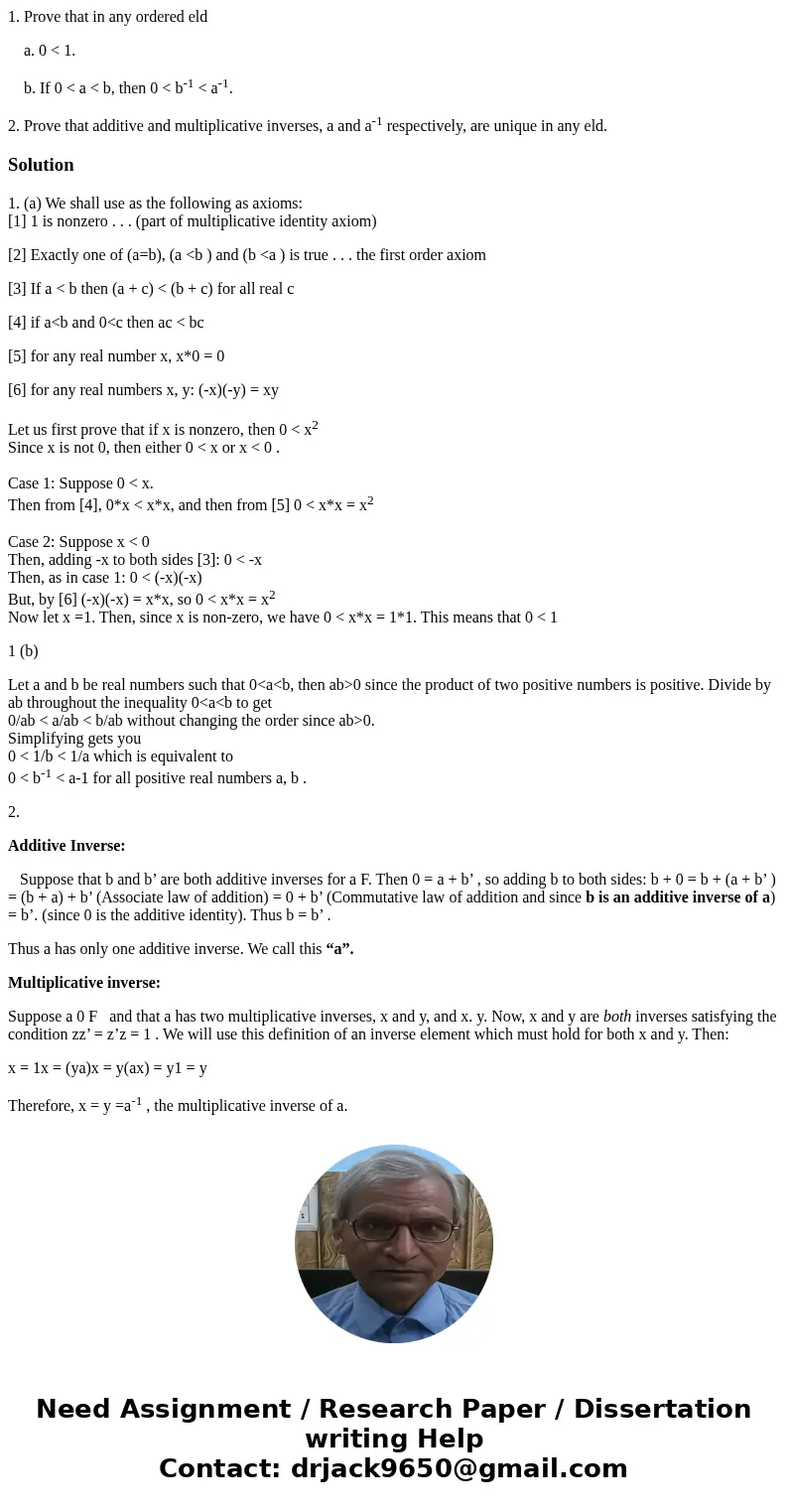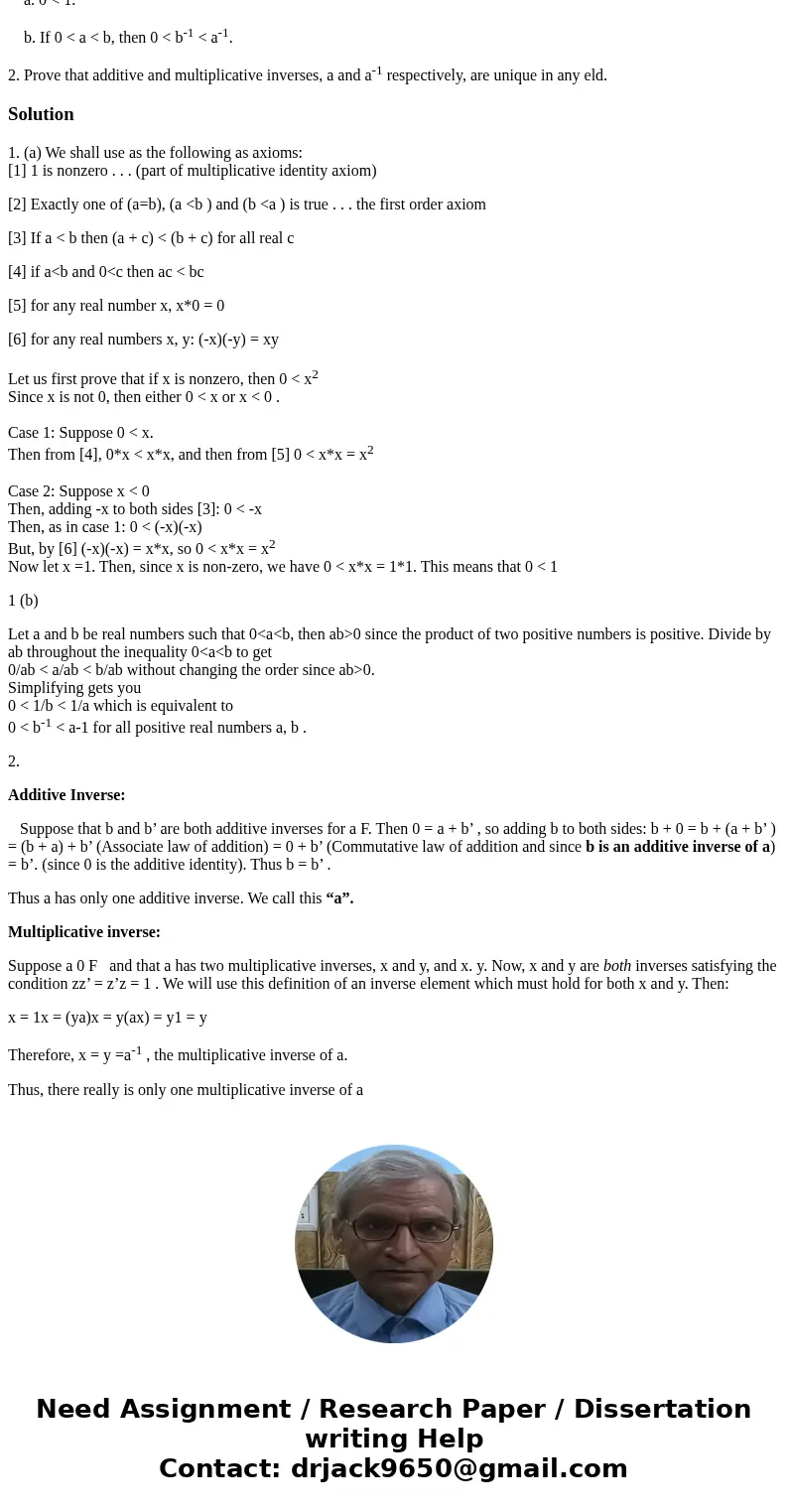1 Prove that in any ordered eld a 0 1 b If 0 a b then 0
1. Prove that in any ordered eld
a. 0 < 1.
b. If 0 < a < b, then 0 < b-1 < a-1.
2. Prove that additive and multiplicative inverses, a and a-1 respectively, are unique in any eld.
Solution
1. (a) We shall use as the following as axioms:
[1] 1 is nonzero . . . (part of multiplicative identity axiom)
[2] Exactly one of (a=b), (a <b ) and (b <a ) is true . . . the first order axiom
[3] If a < b then (a + c) < (b + c) for all real c
[4] if a<b and 0<c then ac < bc
[5] for any real number x, x*0 = 0
[6] for any real numbers x, y: (-x)(-y) = xy
Let us first prove that if x is nonzero, then 0 < x2
Since x is not 0, then either 0 < x or x < 0 .
Case 1: Suppose 0 < x.
Then from [4], 0*x < x*x, and then from [5] 0 < x*x = x2
Case 2: Suppose x < 0
Then, adding -x to both sides [3]: 0 < -x
Then, as in case 1: 0 < (-x)(-x)
But, by [6] (-x)(-x) = x*x, so 0 < x*x = x2
Now let x =1. Then, since x is non-zero, we have 0 < x*x = 1*1. This means that 0 < 1
1 (b)
Let a and b be real numbers such that 0<a<b, then ab>0 since the product of two positive numbers is positive. Divide by ab throughout the inequality 0<a<b to get
0/ab < a/ab < b/ab without changing the order since ab>0.
Simplifying gets you
0 < 1/b < 1/a which is equivalent to
0 < b-1 < a-1 for all positive real numbers a, b .
2.
Additive Inverse:
Suppose that b and b’ are both additive inverses for a F. Then 0 = a + b’ , so adding b to both sides: b + 0 = b + (a + b’ ) = (b + a) + b’ (Associate law of addition) = 0 + b’ (Commutative law of addition and since b is an additive inverse of a) = b’. (since 0 is the additive identity). Thus b = b’ .
Thus a has only one additive inverse. We call this “a”.
Multiplicative inverse:
Suppose a 0 F and that a has two multiplicative inverses, x and y, and x. y. Now, x and y are both inverses satisfying the condition zz’ = z’z = 1 . We will use this definition of an inverse element which must hold for both x and y. Then:
x = 1x = (ya)x = y(ax) = y1 = y
Therefore, x = y =a-1 , the multiplicative inverse of a.
Thus, there really is only one multiplicative inverse of a


 Homework Sourse
Homework Sourse